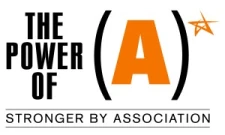 In the Sherlock Holmes mystery “Silver Blaze,” the solution turns on “the curious incident of the dog in the night-time.” Scotland Yard Detective Gregory can be forgiven for his confusion when he protests, “the dog did nothing in the night-time.” “That,” Holmes observes, “was the curious incident.”
In the Sherlock Holmes mystery “Silver Blaze,” the solution turns on “the curious incident of the dog in the night-time.” Scotland Yard Detective Gregory can be forgiven for his confusion when he protests, “the dog did nothing in the night-time.” “That,” Holmes observes, “was the curious incident.”
There are a number of dogs that didn’t bark in Jamie Notter and Maddie Grant’s 2012 Social Leadership Survey. As Joe Rominiecki points out in ASAE’s coverage of the survey, the most deafening silence came in how low “participates on social media in his/her own voice” ranked in the survey’s list of desirable traits in a leader. For all our talk about the importance of engagement in social media, that characteristic ranked tenth out of twelve in the survey. And it came in behind such old school, low-tech characteristics as “brilliant strategist,” “holds others accountable,” and “leverages best practices.”
But before that segment within the association community that insists social media is just the latest fad diverting our time and attention from our real work gets too comfortable, the lesson to be learned is more subtle, but just as challenging to the status quo.
Reading the data, I would consider acceptance, or more precisely, overt recognition of the need for fluency and authenticity in the leader’s social media voice to be a lagging indicator. It comes later. But it will come.
Why do I say that? Look at the leadership characteristics that did rank high in Notter and Grant’s survey: “transparent, shares information freely;” “comfortable with conflict;” “open to diverse perspectives.” These are certainly capacities that are demanded of a social media-fluent association leader. But they are also leading indicators: factors that are driving associations to social media, regardless of their level of comfort, fluency or expertise in that environment.
Now I can already hear the Twitter-resistant among you protesting that these same leadership characteristics have relevance and importance in the “real” world, too. True enough.
But there is no question that social is the increasingly dominant medium for the general population. And I, for one, find the fact that we recognize the importance of being strong in the very areas that will make us successful in both cyber and more traditional communications venues a very encouraging sign. It is a basic requisite for survival in a multi-media environment that is changing rapidly around us —a world where we can ill afford any all-or-nothing media strategies and have to (at least for a while) keep our feet in multiple camps simultaneously or risk disenfranchising some portion of our constituency that is moving at a different speed toward social, or has different communications preferences.
I sometimes get irritated with some of the prophets of social media. They can be just a little too insistent that “social media is the answer,” regardless of the question1. Social is a means to an end, not a goal to be pursued for its own sake. If the data had merely indicated popular enthusiasm for social media as social media, I would have been unimpressed. That would have just recognized an already obvious trend that might even be open to the charge of being a fad.
But the data didn’t do that. It provided validation that the underlying skills necessary in effective social media are increasingly recognized as means every association leader needs to master, regardless of how far they have gone down the social media path.
That suggests we’re moving the right direction, whether we realize it or not.
1 And let me be crystal clear, I do not consider Notter and Grant to be included among those faux prophets of social media. To the contrary. They are among the most clear-headed analysts of social media and associations out there today. And if you haven’t read their book, Humanize, stop reading this blog and get it.
 My picks for the three biggest technology trends affecting associations for 2013:
My picks for the three biggest technology trends affecting associations for 2013:

